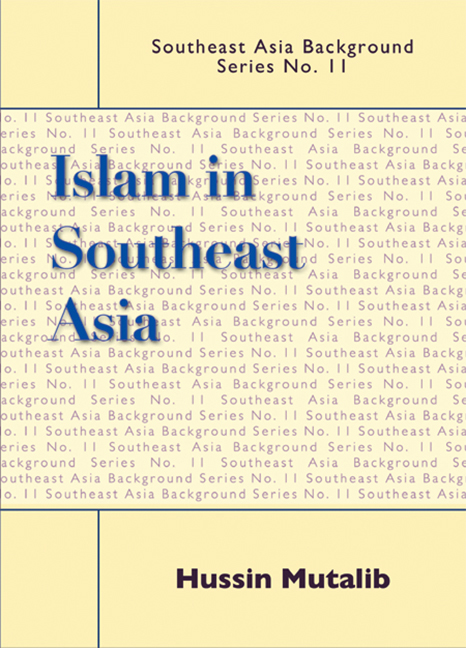Book contents
4 - Brunei
Published online by Cambridge University Press: 21 October 2015
Summary
Islam has had a long history in Brunei, having reached its shores from about the thirteenth century, if not earlier. From Chinese historical records, Brunei was then called Poli (or Polo). The discovery of ancient Chinese coins in Brunei's Kota Batu region and the sending of “goodwill goods” (ivory and spices) by the Brunei royalty to China during the Sung dynasty, reinforced the view that Brunei had established trading links with China and the international community at large during that early period of its history. Other historical artifacts, such as the classical poem, the Syair Awang Semaun, also recorded the cock fighting victory of the Brunei king (Awang Alak Betaar) over that of the Majapahit king (Raden Angsuka), suggesting diplomatic links with Majapahit, then a regional power.
Awang Alak Betaar was reported to have converted to Islam by the Muslim Sultan of Johore (old Singapore) after Betaar's visit there and after his subsequent marriage to the Johore princess in the 1360s. Taking on his new name of Sultan Muhammad Shah, the Brunei Sultan soon encountered an Arab trader from Mecca, Sharif Ali, who was said to have taught the Sultan about Islam. When Sharif Ali himself was later installed as Brunei's third king in 1426, he used the authority to consolidate the Islamization process that was first started by Sultan Muhammad Shah.
Many scholars, however, opined that it was during the reign of Sultan Bolkiah, Brunei's fifth Sultan, in the sixteenth century (1485–1524), that Brunei reached the apex of its Islamic glory, having by then also taking over the role of Malacca as the centre of Islam in Southeast Asia. Under his leadership, Brunei expanded its territorial boundaries to include what is presently the Philippines, Sabah and Sarawak. His marriages with the princesses of the conquered regions (such as Sulu and Manila) also helped the spread of Islam in this part of the world.
- Type
- Chapter
- Information
- Islam in Southeast Asia , pp. 41 - 46Publisher: ISEAS–Yusof Ishak InstitutePrint publication year: 2008

